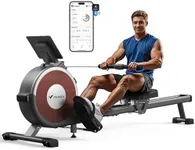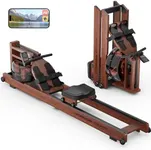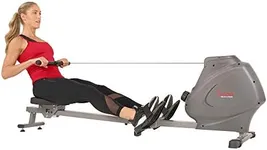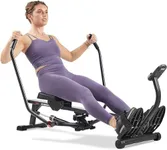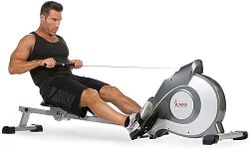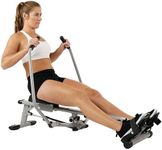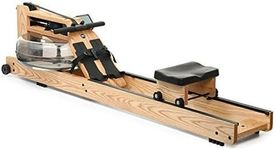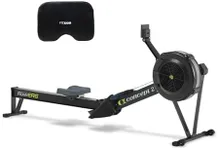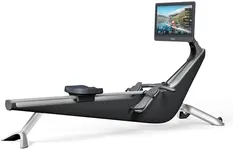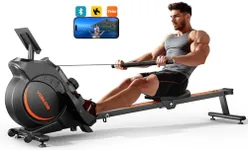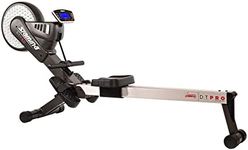Buying Guide for the Best Portable Rowing Machine
Choosing the right portable rowing machine can significantly enhance your fitness routine, especially if you have limited space or need a machine that you can easily move around. When selecting a portable rowing machine, it's important to consider several key specifications to ensure you get the best fit for your needs. Understanding these specs will help you make an informed decision and find a machine that aligns with your fitness goals, space constraints, and personal preferences.Resistance TypeThe resistance type of a rowing machine determines how the machine simulates the feel of rowing on water and how challenging your workout will be. There are four main types: air, magnetic, hydraulic, and water. Air resistance provides a smooth, natural rowing experience and increases with your rowing intensity. Magnetic resistance is quieter and allows for adjustable resistance levels, making it suitable for varied workouts. Hydraulic resistance is compact and often more affordable, but it may not provide as smooth a rowing experience. Water resistance offers a realistic rowing feel and soothing water sounds, but these machines can be bulkier. Choose the resistance type based on your preference for workout feel, noise level, and space availability.
Size and PortabilitySize and portability are crucial for a portable rowing machine, especially if you have limited space or plan to move the machine frequently. Look for a machine that is compact and lightweight, yet sturdy enough to provide a stable workout. Some machines can be folded or have wheels for easy storage and transport. Consider the dimensions of the machine when in use and when stored, and ensure it fits your available space. If you need to move the machine often, prioritize models that are easy to fold and have transport wheels.
Weight CapacityThe weight capacity of a rowing machine indicates the maximum user weight it can safely support. This is important for ensuring the machine's durability and your safety during workouts. Weight capacities typically range from 250 to 500 pounds. Choose a machine with a weight capacity that comfortably exceeds your body weight to ensure stability and longevity. If multiple users will be using the machine, consider the heaviest user when making your selection.
Monitor and DisplayThe monitor and display on a rowing machine provide important workout data such as time, distance, strokes per minute, and calories burned. A good monitor can help you track your progress and stay motivated. Basic models may have simple displays with limited data, while advanced models offer more comprehensive tracking and additional features like heart rate monitoring and pre-set workout programs. Choose a monitor that provides the data you find most useful and easy to read, and consider any additional features that may enhance your workout experience.
Comfort and AdjustabilityComfort and adjustability are key to ensuring a pleasant and effective workout. Look for a rowing machine with a comfortable seat, ergonomic handle, and adjustable footrests. The seat should be cushioned and glide smoothly along the rail. The handle should have a comfortable grip to prevent blisters and strain. Adjustable footrests accommodate different foot sizes and ensure proper rowing form. If you plan to use the machine frequently or for long sessions, prioritize comfort and adjustability to prevent discomfort and injury.
Build Quality and DurabilityThe build quality and durability of a rowing machine determine how well it will withstand regular use over time. Look for machines made from high-quality materials like steel or aluminum, which offer better stability and longevity. Check user reviews and manufacturer warranties to gauge the machine's reliability and durability. A well-built machine may cost more initially but can save you money in the long run by reducing the need for repairs or replacements. Choose a machine that feels solid and well-constructed to ensure a safe and lasting investment.
